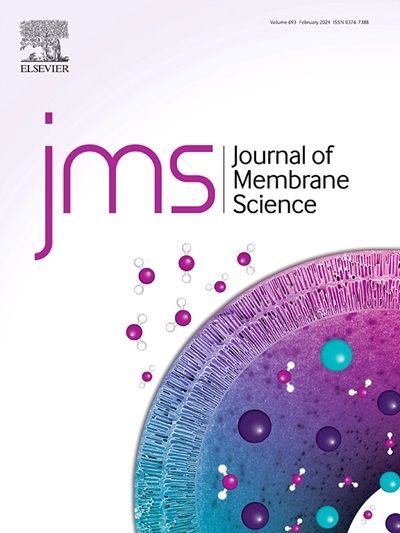Revealing the internal β-phase PVDF membrane fouling tendency using double layer piezoelectrics
IF 8.4
1区 工程技术
Q1 ENGINEERING, CHEMICAL
引用次数: 0
Abstract
Dissolved organic matter (DOM) is recognized as a crucial factor contributing to the irreversible fouling of ultrafiltration membranes. Quartz crystal microbalance with dissipation (QCM-D) offers insights into the kinetics of fouling layer formation and its structure in-situ on a model membrane. However, a clear correlation between the membrane fouling process and the adsorption-desorption results obtained from QCM-D has yet to be established. In this study, piezoelectric β-phase PVDF membranes were prepared, and their fouling behavior in response to three model compounds (humic acid (HA), dextran (DEX), bovine serum albumin (BSA), and their mixed solutions was examined. It was firstly proposed that the spin-coated model PVDF membrane surface exhibited a typical β-phase structure, characterized by regular undulations resulting from strong stretching effects. A novel double layer piezoelectric sensor, consisting of a β-phase layer over a piezoelectric quartz substrate, was designed for QCM-D analysis to assess the mass and stiffness variations of the absorbed DOM layer. The fouling tendency followed the order of BSA > Mixture > DEX > HA, with the foulant monomeric units having a similar molecular mass of around tens of kDa. Irreversible fouling resistance in series model as well as frequency drop in QCM-D were listed as indicators of irreversible fouling caused by foulant-membrane interaction, which realized a well-defined match for the first time.

求助全文
约1分钟内获得全文
求助全文
来源期刊

Journal of Membrane Science
工程技术-高分子科学
CiteScore
17.10
自引率
17.90%
发文量
1031
审稿时长
2.5 months
期刊介绍:
The Journal of Membrane Science is a publication that focuses on membrane systems and is aimed at academic and industrial chemists, chemical engineers, materials scientists, and membranologists. It publishes original research and reviews on various aspects of membrane transport, membrane formation/structure, fouling, module/process design, and processes/applications. The journal primarily focuses on the structure, function, and performance of non-biological membranes but also includes papers that relate to biological membranes. The Journal of Membrane Science publishes Full Text Papers, State-of-the-Art Reviews, Letters to the Editor, and Perspectives.
 求助内容:
求助内容: 应助结果提醒方式:
应助结果提醒方式:


